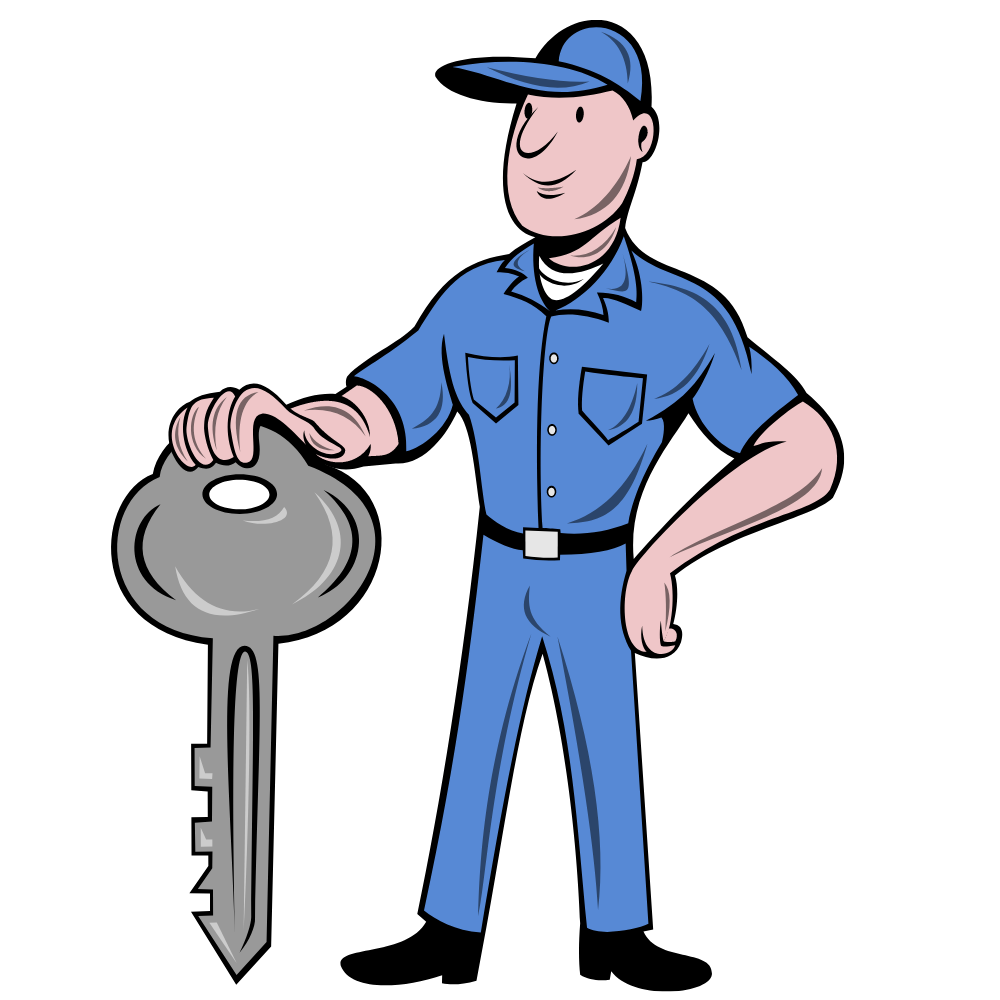Locks play a crucial role in protecting our homes and providing peace of mind. However, even these reliable protectors can sometimes have issues that disrupt our sense of security and need prompt attention. In our Lock Troubleshooting Guide, we delve into common lock problems homeowners frequently face. From locks that are difficult to turn to latches that don’t align properly, we address a range of issues, making them easier to understand and offering practical tips to solve them. This comprehensive guide is designed to be a valuable resource, giving you the knowledge to confidently handle lock problems and ensure your spaces remain secure and accessible. Let’s explore the complexities of locks together, discovering solutions and preventive measures to keep them working well and reliable in protecting your
property.
1) Sticky or Seized Locks
Description of the Problem:
Furthermore, sticky or seized locks are a common issue that can be quite frustrating for homeowners. A lock becomes sticky or seized when it’s difficult to turn the key when inserting it into the lock or when the key is already inside. This can make it challenging to lock or unlock the door, compromising the ease of access to your property and possibly influencing your home’s security, as detailed in the Lock Resolving Guide.
Discover effective solutions for sticky or seized locks in our Lock Troubleshooting Guide.
Common Causes:
Dirt and Grime: Locks can, over time, collect dirt, grime, and tiny particles, which can cause their mechanisms to become sticky and challenging to use. This buildup can decrease the overall functionality and ease of operation of locks, as explained in the Lock Resolving Guide.
Lack of Lubrication:An absence of regular lubrication hinders the smooth operation of locks. Consequently, the lack of proper maintenance can lead the internal mechanisms to seize, making it difficult to unlock or lock the doors.
Wear and Tear: The natural and unavoidable wear and tear from regular usage significantly affect the lock’s performance. Over time, frequent use causes the lock’s internal parts to worsen, which can affect how well it works.
Regular Cleaning: Regularly cleaning the lock and keyhole is important to prevent dirt and grime buildup. Additionally, ensure the locks are well-lubricated using a suitable lock lubricant for optimal performance.
Weather Protection: Shielding locks from harsh weather conditions is vital. Therefore, it’s crucial to utilize protective covers and other means to protect locks from the elements, ensuring continuous,
without hindrances operation.
Professional Assessment: If the lock continues to be sticky despite your efforts, it may be best to seek the expertise of a professional locksmith to assess and repair the lock.
2) Key Doesn’t Turn
Explaining the Issue:
An all-too-common lock problem is when the key doesn’t turn in the lock. This issue can prevent you from unlocking or locking your door, leaving your property unsecured or you locked out. Recognizing why this might be happening is important to resolving the issue effectively and preventing it in the future.
Possible Reasons:
Faulty Lock Mechanism: When the internal components of a lock are damaged or excessively worn out, it hinders the mechanism’s proper functioning. This wear or damage can make it difficult, if not impossible, for the key to turn and effectively operate the lock.
Wrong Key: Utilizing an incorrect key, even one that fits into the keyhole, can prevent the lock from operating. The mismatch between the key’s cuts and the lock’s pins will inhibit the turning motion, causing issues in unlocking or locking.
Temperature Effects: Extreme temperatures can harm the lock and its matching key. Cold can cause the metal to contract, and heat can lead to expansion, both of which can make turning the key in the lock a challenging task.
Buildup Inside the Lock: As time goes by, locks can collect dirt, grime, or even rust. Subsequently, This buildup can clog the internal parts of the lock, causing the key to turn less smoothly and making it harder for the lock to work properly, impacting your overall experience with the Lock Resolving Guide.
Suggestions for Resolving the Problem:
Inspect the Key and Lock: Before attempting to unlock, always ensure you’re using the correct key, and both the key and lock are in good condition. A mismatch or wear can prevent the lock from operating smoothly.
Lubricate the Lock: To make it easier to turn the key smoothly, you can use a proper lubricant on the lock. This reduces friction, making it easier to unlock, and can also help remove small blockages inside the lock.
Adjust to Temperature: Consider the effect of extreme temperatures on the lock and key. Allowing them to adjust to room temperature can improve functionality, especially during periods of intense cold or heat
Seek Professional Help: If simple troubleshooting doesn’t solve the problem, it’s a good idea to seek help from a professional. A locksmith can thoroughly inspect the lock and make any necessary repairs to ensure it functions properly.
3) Difficulty Inserting or Removing the Key
Understanding the Issue:
Lots of people encounter problems when trying to insert or remove keys from locks. This issue can result in significant problems, like not being able to lock up your property or getting locked out. It’s important to understand this problem thoroughly to find the right solutions. If simple troubleshooting doesn’t fix the issue, it’s a good idea to get help from a professional locksmith. They can thoroughly examine the situation and make any needed repairs to ensure the lock functions properly.
Causes of a Jammed Key:
Misaligned Door: At times, the door and door frame may not be properly aligned, making it hard to insert or remove the key.
Damaged Key: A bent or worn-out key can have trouble fitting into the lock smoothly.
Foreign Objects: Tiny debris or foreign objects inside the keyhole can obstruct the key.
Worn-Out Lock: Over time, the internal parts of the lock can wear out, making it hard to operate with a key.
How to Address This Issue:
Check and Adjust Door Alignment: Ensuring the correct alignment of the door and its frame is crucial. Misalignments can cause the lock to not function properly. Check the alignment regularly and make necessary adjustments to maintain the lock’s effectiveness and ease of operation.
Inspect the Key: It’s important to regularly check your key. If the key is worn or damaged, it could be a potential cause of lock problems. Make sure the key is in good shape, and don’t hesitate to replace it if you see any signs of wear or damage..
Clean the Lock: Maintenance of the lock is necessary for its smooth operation. Regular cleaning will ensure that blockages like dirt and grime do not accumulate inside the keyhole, allowing the key to turn smoothly and operate the lock without hindrance.
Consult a Locksmith: When basic troubleshooting and common solutions do not resolve the lock issues, consulting a professional locksmith becomes necessary. A locksmith can provide a comprehensive assessment of the issue and implement professional solutions to restore the lock’s functionality.
4)Door Lock is Hard to Lock and Unlock
Identifying the Issue:
When a door lock becomes difficult to lock and unlock, it’s more than just an trouble. A key that refuses to turn is a sign that something within the mechanism isn’t functioning correctly. Consequently, it needs immediate attention to avoid potential lockouts or security risks. Understanding what causes this issue is crucial in finding the right solution.
Common Causes:
Misaligned Door Latch: A latch that doesn’t properly align with the strike plate often makes the locking and unlocking process hard.
Worn Out Parts: Over time, the internal parts of a lock, such as springs and pins, can wear out, affecting the lock’s performance.
Temperature Fluctuations: Weather changes can cause the door or its frame to expand or contract, affecting the lock’s alignment. Additionally, this issue can lead to difficulties in turning the key or latching the door securely.
Debris in the Lock Cylinder: Dust and other small particles can gather inside the lock in the Lock Troubleshooting Guide, making it hard to turn the key.
Practical Solutions:
Realign the Door: Ensure that the door, latch, and strike plate are correctly aligned. You might need to adjust or replace the strike plate.
Clean the Lock: Regular cleaning can prevent debris buildup. Consider using compressed air to clean the inside parts.
Apply Lubricant: Lubrication can help the parts move smoothly, making it easier to lock and unlock the door, as emphasized in the Lock Resolving Guide.
Consult a Locksmith: If the problem persists, getting professional assistance is advisable to avoid further damage to the lock or door, as recommended in the Lock Resolving Guide.
5)Misaligned Door Latch
Identifying the Issue:
A misaligned door latch can prevent the door from shutting properly, and it might not lock or unlock smoothly. Recognizing this problem early can help resolve it before it leads to more significant issues, such as being unable to secure the door.
Common Causes:
Improper Installation: If the door, lock, or strike plate hasn’t been installed correctly in the Lock Troubleshooting Guide, it might result in misalignment.
Wear and Tear: Doors and their frames can wear over time, leading to a shift in alignment that may require the use of a Lock Resolving Guide to address the issue.
Temperature Changes: Wooden doors and frames might expand or contract due to weather variations, causing misalignment, which can often be corrected using a Lock Resolving Guide.
Solutions and Adjustments:
Adjusting the Strike Plate: Minor adjustments to the strike plate position might correct the latch alignment, a helpful tip you’ll find in the Lock Resolving Guide.
Repositioning the Door: In some cases, reinstalling or adjusting the door might be necessary to align it properly with the latch, as detailed in the Lock Resolving Guide.
Filing the Strike Plate: Enlarging the hole in the strike plate slightly might allow the latch to engage correctly. Furthermore, this adjustment could improve the lock’s performance.
Professional Assessment: If DIY solutions aren’t effective, then consider hiring a professional locksmith for a more accurate door and lock adjustment, as recommended in the Lock Resolving Guide.
6)Faulty Door Knobs or Handles
Outlining the Issue:
Door knobs and handles are crucial for operating doors but often overlooked in Lock Troubleshooting Guide. Over time, they can become worn or damaged, affecting their functionality and the overall security of the door.
Causes of Wear and Tear:
Frequent Usage: Frequent operation can lead to wear and tear of locks and knobs. Constant use, especially in high-traffic areas, necessitates regular maintenance to uphold functionality and security.
Environmental Factors: Locks can wear down because of exposure to different weather conditions and environmental factors. This requires weather-resistant features and regular maintenance to make sure they last a long time and work well.
Poor Quality Materials: Using low-quality materials in locks greatly reduces their durability and security. Therefore, it’s important to invest in high-quality locks for better performance and increased security against potential tampering.
Tips for Repairing or Replacing:
Tightening Components: Furthermore, screws or parts that are not securely fastened in locks and handles can make them unstable and less effective. It’s important to regularly tighten and make adjustments to keep the locking mechanisms working properly and maintain their strength and functionality.
Lubrication: Additionally, using the right lubrication keeps locks and knobs operating smoothly, preventing them from becoming stiff or making squeaking noises. Regularly applying the appropriate lubricants ensures that the parts work together seamlessly, extending the life of the lock, as highlighted in the Lock Resolving Guide.
Replacement: Furthermore, in cases of severe damage or wear, replacing knobs or handles is crucial. Immediate replacement is necessary to maintain optimal door security and functionality, ensuring the safety and integrity of the space.
7)Electronic Lock Issues
Exploring Common Problems with Electronic Locks:
Electronic locks offer improved security but can present unique challenges, like battery issues, programming errors, or connectivity problems.
Guidance for Troubleshooting:
Battery Checks:Regularly checking and make sure that the batteries in electronic locks are adequately charged and functional is crucial. Importantly, this routine check is important for maintaining uninterrupted operation and preventing unexpected lockouts. Furthermore, for those seeking to optimize electronic lock performance, you can find extra tips and guidance in our Lock Troubleshooting Guide.
Software Updates: Maintaining the lock’s software is crucial for optimal performance and security. To begin with, keeping it updated to the latest version is essential. Furthermore, updated software ensures that the lock benefits from the latest features and security enhancements. For more detailed software maintenance strategies, you can explore our Lock Troubleshooting Guide for details explanation.
Resetting: If the lock is not working properly, first, try resetting it. Resetting can also return the lock to its default settings, which might resolve any operational issues you’re experiencing, as suggested in the Lock Resolving Guide.
When to Seek Professional Help:
In addition, professional assistance should be sought if troubleshooting doesn’t resolve the issues, or if there’s uncertainty regarding the lock’s operation or installation.
8)Preventive Measures and Maintenance
Recommendations for Regular Lock Maintenance:
Regular Inspections: Conducting routine examinations of locks is important to identify signs of wear or damage early. Regular assessments help in ensuring that locks function effectively, maintaining the overall security of the property.
Lubrication: Moreover, applying lubricant to the moving parts of locks is crucial for maintaining their smooth operation. Regular lubrication prevents wear, tear, and rust, make sure that the locks function most effectively over time.
Tips for Avoiding Common Lock Problems:
Proper Installation: Ensuring that locks are correctly and securely installed is basic. A proper installation is notable for preventing numerous potential issues. It guarantees that the lock functions optimally and provides the expected level of security. Moreover, for thorough setup tips and solutions, you can explore more understanding in our Lock Troubleshooting Guide.
Use Quality Products: Choosing high-quality locks and components is crucial. Remarkably, excellent products tend to last longer, offer greater reliability, and provide
improved performance, ultimately offering improved security and longevity. Therefore, for further valuable guidance on selecting and preserving high-quality locks, it’s recommended to refer to our Lock Troubleshooting Guide.
Conclusion
In summary, this detailed guide, along with our Lock Troubleshooting Guide, has covered many typical lock problems. It provides you with practical tips and solutions to help you maintain your door locks and ensure home security. It also stresses the significance of regular maintenance and staying vigilant for potential issues. These are key strategies to ensure your door locks work well and effectively protect your home.











